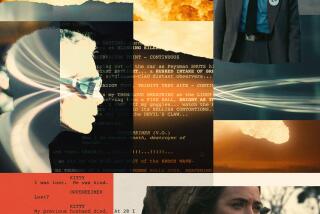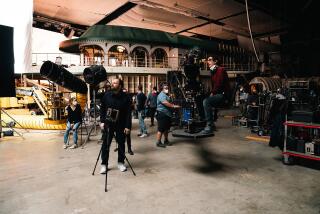‘Jason’ a Lesson in Special-Effects History
- Share via
Few film transfers reveal the laser disc’s ability to capture and dissect the evolution of special effects better than the Criterion Collection’s transfer of “Jason and the Argonauts.”
Made three decades ago, well before the special-effects revolution spawned by George Lucas and Steven Spielberg, “Jason” sharply showcases the innovations of special-effects master Ray Harryhausen.
As the film’s hero (Todd Armstrong) searches for the golden fleece and battles the obstacles that the gods and nature throw in his path, Harryhausen’s narration on a second analogue track provides an illuminating textbook lesson in how he and his staff solved a host of technical challenges.
The film was shot on location in Greece and Italy in 1961 and 1962 and took two years in postproduction.
A key sequence, in which Jason fights some particularly nasty skeletons, took 4 1/2 months by itself. The CAV format enables you to stop the action with great precision, as close to a frame-at-a-time viewing as you’ll get at home. Harryhausen’s detailed recollections of real stuntmen doubling for the skeletal figures who were later inserted into the scene enhances the experience. And in supplemental material, there’s footage of Harryhausen himself showing how it should be done.
The analogue track successfully alternates Harryhausen’s descriptions of almost--but not quite--all of his techniques with commentary from film historian Bruce Eder putting the film into perspective.
Unlike other narrative tracks that have accompanied some laser discs, Harryhausen’s is filled with detail, surprises and warm anecdotes that reveal not only the film’s special-effects secrets but also the special-effects master’s enthusiasm for what he does. “Stop motion is so useful,” he says, “because it gives the drama . . . quality.”
“Jason” also gave Harryhausen a chance to be innovative without stop motion, as a close freeze-frame viewing of Jason’s treacherous odyssey through crashing rocks shows. The secret of Triton’s successful intervention on screen lay in the speed at which the film was shot and the choice of actor for the role (one with a long reach and endurance under water).
As usual, Criterion took great care with this transfer, seeking Harryhausen’s advice on key scenes, and using a digital film-to-tape technique that selected “the best elements of two existing interpositives.” The digital sound greatly enhances Bernard Herrmann’s evocative score.
If you’ve only seen this film on pale reissues and chopped-up TV versions, you’re in for a pleasant surprise.
* “Jason and the Argonauts” (1963), Criterion: Two discs, CLV (extended play) on Side 1; CAV (full-feature format) Sides 2, 3 and 4; audio analogue commentary track; 104 minutes; 49 chapter stops; original theatrical trailer for “Jason and the Argonauts,” plus “It Came From Beneath the Sea,” “The Earth Versus the Flying Saucers,” “The 7th Voyage of Sinbad” and “Sinbad and the Eye of the Tiger”; “Jason” storyboards, lobby cards; memos on deleted scenes; detailed looks at the skeleton and hydra sequences; $100.
More to Read
Only good movies
Get the Indie Focus newsletter, Mark Olsen's weekly guide to the world of cinema.
You may occasionally receive promotional content from the Los Angeles Times.










